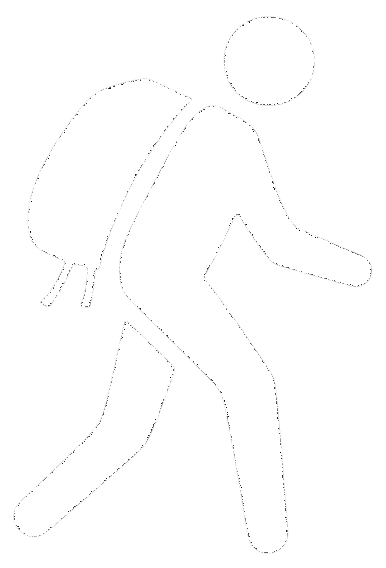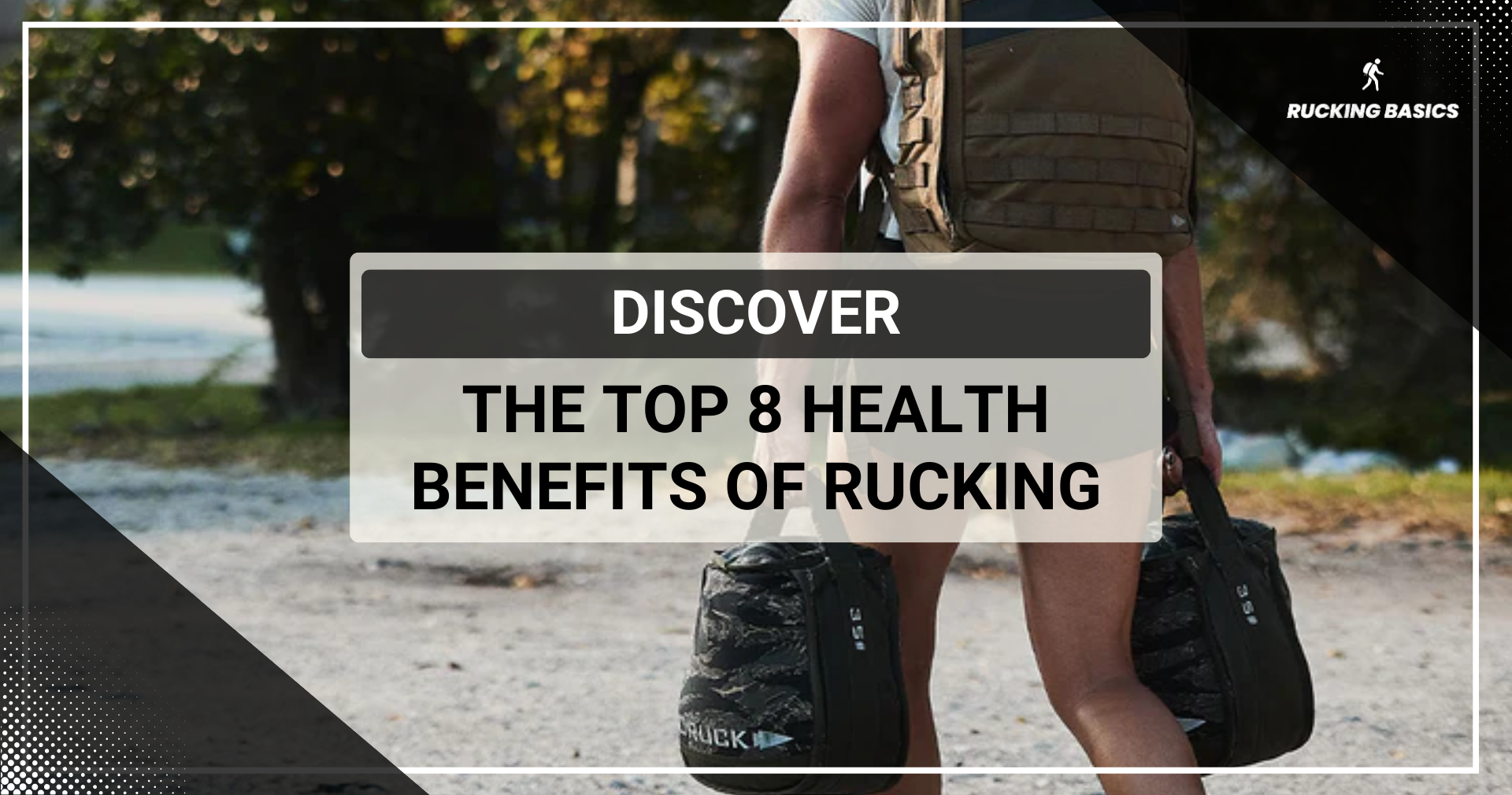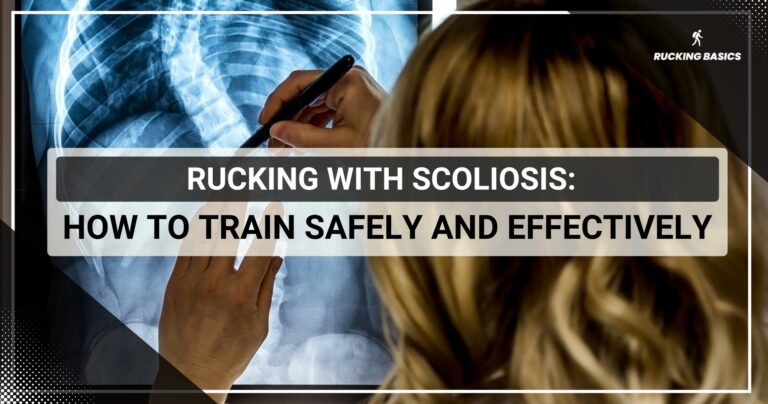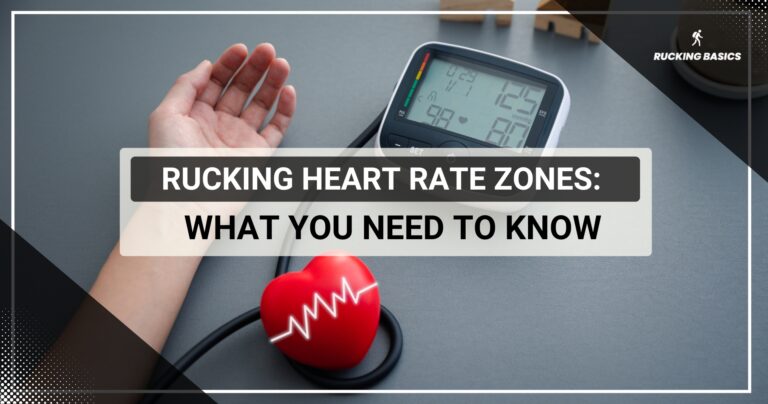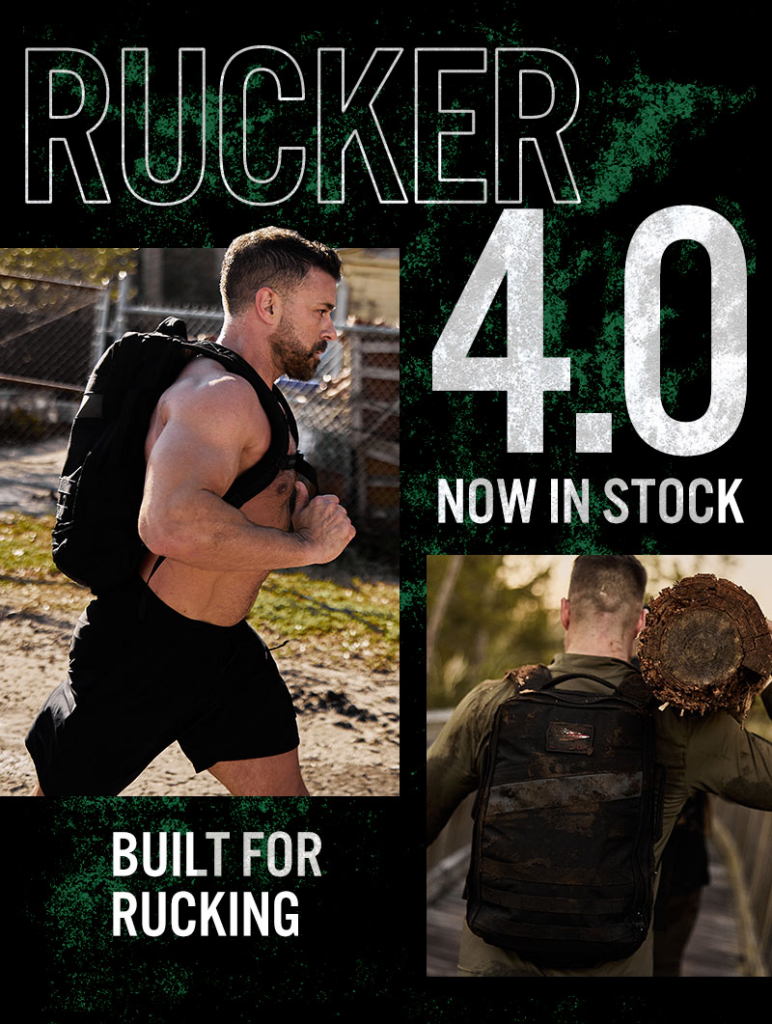As a fitness professional, I’m so tired of new fitness trends and workouts emerging seemingly every day and promising miraculous health benefits. It is surely even more overwhelming for a regular person who just wants to start some physical activity but doesn’t know where to start.
Actually, the main problem is that we all tend to think that new types of workouts that look fancy because they take place in a brand-new gym or utilize Apple Vision Pro are inherently better than some old-school activities. But that’s just not true.
That’s why it’s easy to overlook simple yet powerful activities like rucking. Originating from military training, rucking involves walking with a loaded backpack, and its health benefits extend far beyond just physical fitness.
Let’s dive into the depths of rucking and discover its incredible health benefits.
8 Health Benefits of Rucking
Now is the time to analyze how rucking will impact your physical and mental health, both short-term and in the future.
Improved Cardiovascular Health
Think of practically any cardiovascular disease, and I’ll tell you that regular physical activity can affect prevention. (1)
Of course, rucking is no exception and is even one of the better activities for cardiovascular health. A multi-hour increase in heart rate strengthens your heart muscle and improves its efficiency in pumping blood throughout your body.
The consistent heart rate elevation during rucking also stimulates the release of endorphins, which are natural mood boosters. I’ll address mental well-being later, but endorphins reduce stress and anxiety, improving heart health as well.
Do you know that nearly half of adults in the USA have hypertension? That’s a staggering percentage. I couldn’t believe it and had to double-check on the CDC website, where I found identical information. (2) The risk of hypertension decreases with rucking. It can help lower blood pressure by improving the function of blood vessels.
Weight Management and Fat Loss
We are living in the age of a global epidemic of overweight and obesity, so-called “globesity.” This problem is becoming more and more prevalent each decade.
That is why activities that can help us overcome a sedentary lifestyle, one of the main culprits for the obesity pandemic, are of the utmost importance.
Rucking is a highly effective method for burning calories and achieving fat loss. It combines resistance training with cardiovascular exercise, which is not easily achieved in the gym. You can try HIIT training, but still it’s not beneficial in the same way as rucking.
Rucking results in significant calorie expenditure, as your body works harder to carry the additional weight while walking relatively fast. To get a better understanding of its effectiveness, check out how many calories does rucking burn during a typical session.
This benefit is also directly related to cardiovascular health, which I discussed in the previous paragraph. Excess weight causes hypertension and other cardiovascular problems.
Enhanced Muscle Strength and Endurance
I’ve heard it countless times from new clients: they’re hesitant about gaining muscle, fearing they’ll look like bodybuilders. Their priority is to find solutions for back pain, knee discomfort, or other health problems.
My answer is always the same: we don’t strengthen muscles to have a stunning beach body but for functional strength. And no, don’t worry, you won’t look like Ronnie Coleman or Jay Cutler, no matter how much you train. You need much more than walking with your body weight and extra weight in the weighted vest to achieve that superhuman physique.
Most people associate rucking with cardiovascular benefits, but it is also a fantastic activity for muscle strength and endurance. It engages major muscle groups, including the quadriceps, hamstrings, glutes, and back.
One of the primary benefits of rucking for muscle strength is its ability to provide a functional full-body workout. Unlike traditional gym exercises that isolate specific muscle groups, rucking recruits multiple muscles simultaneously – similar to real-life movements and activities.
Since rucking typically involves walking for extended durations while carrying a weighted backpack, it naturally enhances muscular endurance.
We should not forget the improved posture that comes as a direct consequence of core strengthening.
Better Joint Health and Increased Bone Density
Those who trained with me know how much I like high-impact activities such as plyometrics, but there is no doubt that those activities place significant stress on the joints. On the other hand, rucking is a gentler alternative.
One of the key advantages of rucking for joint health is its low-impact nature. If you cover reasonable distances, wear and tear on the joints will be minimal, as well as the risk of overuse injuries, like stress fractures or tendonitis.
You have heard everything about osteoporosis because it is something that many people face, not only the elderly but the middle-aged, too. Rucking can improve bone health and density. The mechanical loading during rucking promotes bone mass increase. (3)
To learn more about its benefits for bone health, check out rucking for osteoporosis, which explains how rucking can help prevent and manage this condition.
Mental Well-Being
Today, there is more talk than ever about mental health, and the stigma of going to psychotherapy has disappeared. In 2024, Tony Soprano would not have to hide his visits to Dr. Melfi.
Yet, we should aim to do even more for our mental well-being. That’s where rucking comes in — it benefits not just the body but also the mind and soul.
The first and most obvious way rucking contributes to enhanced mental well-being is by releasing endorphins. There is no difference between rucking, running, or any other activity that can cause a “Runner’s High.”
I like to focus even more on rucking as a stress-relief tool. It helps you disconnect from the pressures of daily life and immerse yourself in the present moment. Present-moment awareness is very important because most of us are constantly thinking about what is yet to happen.
Nature is next. Sights, sounds, and sensations of your surroundings are healing. Even studies have proven that nature impacts human health. (4)
Rucking can also be used to spend time with friends that we otherwise rarely see because of everyday obligations. I could go on forever listing the impact of rucking on mental well-being.
Boosted Immune System
A strong immune system is important for preventing flu and colds, as well as much more serious diseases like cancer and chronic inflammation.
During rucking, your body responds by increasing the production of white blood cells and antibodies. Additionally, the repetitive, rhythmic motion of walking with a loaded backpack stimulates circulation and lymphatic flow, thus removing toxins and waste products from the body.
We can connect the previous benefit with this because when you lower stress levels, you also improve immunity. Chronic stress significantly weakens the immune system. Spending time in nature also directly boosts immunity because you breathe fresh air instead of city pollution.
Improved Sleep Quality
Have you ever seen the recovery pyramid? The most important part is sleep — not massage, ice bath, or foam roller, but sleep, which is the foundation of the recovery pyramid.
I always ask my clients if they slept at least 7 hours because it directly affects the quality of the workout. More than 50 million Americans have insomnia or another sleeping disorder.
Physical activity in nature, like rucking, can be a cure for it. Rucking can regulate circadian rhythms, the body’s internal clock that controls the sleep-wake cycle. As you ruck during daylight hours, exposure to natural outdoor light helps synchronize your circadian rhythms.
On top of that, physical activity will tire you out, reduce tension, and relax you. You will sleep like a baby when you go to bed at night after a long ruck.
Enhanced Athletic Performance
I advocate sport-specific fitness training, but rucking can be implemented in athletes’ routines as a versatile cross-training tool.
Although it can’t improve sport-specific skills, it affects stamina, endurance, immunity, and sleep – crucial aspects for every athlete.
One primary way in which rucking workout enhances athletic performance is by improving cardiovascular fitness and endurance.
Rucking is a low-impact form of aerobic exercise, so I like to use it to build endurance and stamina during the later stages of injury recovery. Let’s say when the athlete is around 70%.
Many athletes, especially young ones, struggle to focus during matches. Rucking provides an opportunity for athletes to engage in mental conditioning and focus training, which are crucial for peak athletic performance. What separates Patrick Mahomes and Carlos Alcaraz from backup quarterbacks or tennis players outside of the top 100? It is not the quality of a back shoulder pass or forehand but the ability to maintain concentration and mental clarity for a prolonged period.
Conclusion
Rucking has many health benefits, so I’m not surprised that the rucking community is growing so much. I have the impression that in the last few years, two activities — rucking and padel — have taken the world by storm.
While padel requires court and equipment, rucking is easily accessible. I’m sure that after reading about all these benefits, you are determined to go on your first rucking as soon as possible. Start gradually. Don’t immediately go for the ruck march, but start with shorter distances and lighter weights. Then, gradually progress.
The RuckingBasics team wishes you happy rucking!
Frequently Asked Questions
Can I ruck if I have a previous injury?
Most activities, including rucking, can be adapted to previous injuries. Yet, it depends on the type of injury, when it happened, whether the recovery was done properly, etc. In many cases, rucking can help with injury recovery by strengthening muscles and improving joint stability. The bottom line is that you should listen to your body and consult with a doctor if you have any concerns.
Is rucking better than running for weight loss?
Both rucking, running, and strength training can be effective for weight loss. Running will make you burn more calories, but that does not mean that it is more effective for weight loss in the long term. Rucking offers the added benefit of building strength and muscle mass due to the added weight of the backpack. More muscle mass translates into better fat-burning capabilities and thus faster body composition changes.
How often should I ruck to see results?
The frequency of rucking depends on your fitness goals, current fitness level, and overall schedule. Aim to ruck 2-3 times per week for general fitness and health benefits. After longer ruck marches, rest for a few days to prevent bone stress injuries (BSI). (5)
Can rucking be done indoors on a treadmill?
I tried it, and yes, you can ruck indoors on a treadmill. Wear a loaded backpack and set the treadmill to a slight incline to simulate the terrain and resistance encountered during outdoor rucking. However, treadmill rucking should not be a permanent substitute for real rucking. It’s okay to do it on a treadmill occasionally, but you don’t want to sacrifice the scenic views and fresh air. Nature is responsible for many of the rucking benefits.
References
- Pinckard K, Baskin KK, Stanford KI. Effects of Exercise to Improve Cardiovascular Health. Front Cardiovasc Med. 2019 Jun 4;6:69. doi: 10.3389/fcvm.2019.00069. PMID: 31214598; PMCID: PMC6557987.
- https://www.cdc.gov/bloodpressure/facts.htm
- Liu P, Tu J, Wang W, Li Z, Li Y, Yu X, Zhang Z. Effects of Mechanical Stress Stimulation on Function and Expression Mechanism of Osteoblasts. Front Bioeng Biotechnol. 2022 Feb 17;10:830722. doi: 10.3389/fbioe.2022.830722. PMID: 35252138; PMCID: PMC8893233.
- Nejade RM, Grace D, Bowman LR. What is the impact of nature on human health? A scoping review of the literature. J Glob Health. 2022 Dec 16;12:04099. doi: 10.7189/jogh.12.04099. PMID: 36520498; PMCID: PMC9754067.
- Earl-Boehm JE, Poel DN, Zalewski K, Ebersole KT. The effects of military style ruck marching on lower extremity loading and muscular, physiological and perceived exertion in ROTC cadets. Ergonomics. 2020 May;63(5):629-638. doi: 10.1080/00140139.2020.1745900. Epub 2020 Apr 2. PMID: 32191155.
